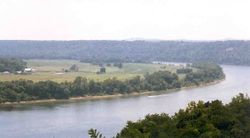Integrated Coastal Zone Management and Integrated Water Resources Management
Contents
The rise of Integrated Coastal Zone Management and Integrated Coastal Area and River Basin Management
The discussion about Integrated Coastal Zone Management (ICZM) and integrated water resources management (IWRM) is politically important since the European Commission has prioritized policies for ICZM and river basin IWRM (CEC, 2000a; CEC, 2000b) [1][2].
Integrated Coastal Zone Management and Integrated Water Resources Management
ICZM and IWRM are special cases of environmental planning. ICZM refers to a “dynamic and continuous process of administering the use, development and protection of the coastal zone and its resources towards common objectives of national and local authorities and the aspiration of different resource user groups” (Knecht and Archer, 1993). ICZM refers to coastal resources management in a way that recognizes interdependencies and interaction; to sectoral planning and coordination of activities in a way that recognizes interaction between socio-economic and natural environment; to an integrated spatial consideration of the coastal zone which identifies interdependencies between the critical coastal zone and the development of a broader area. ICZM, as a broad system of management, includes information collection, planning, decision-making, implementation, monitoring and evaluation. ICZM, in a communicative role is first of all a dynamic process which starts with identification of issues, facilitates dialog and awareness among stakeholders, supports and enhances cooperation which is the basis for coordination of actions. It can assist local communities in understanding the interdependency between environment and development and eventually in shaping a future vision which could guide actions towards a long-term sustainable management of resources, while securing a balance among economic efficiency, social equity and environmental conservation. ICZM, as a decision making tool can also assist in resolving conflicts over use among activities competing over the same limited resources (Mexa and Coccossis, 2004) [3]. IWRM is an environmental planning process which promotes the coordinated development and management of water, land and related natural resources, in order to maximize the resultant economic and social welfare in an equitable manner without compromising the sustainability of ecosystems (Global Water Partnership, 2000) [4]. In Europe, the Water Framework Directive (WFD)emphasises long-term IWRM at the river basin level and it positions stakeholder negotiation and public participation as central in the planning process (CEC, 2000a; Kallis, 2005; Van der Helm, 2003) [5][6][7].
Integrated Coastal Area and River Basin Management
Lately it has been widely recognised that river basins and coastal sectors are linked through their physical and ecological structure and related physical and biological processes. Coastal areas and river basin provide space and resources, while they host valuable ecosystems and several economic activities which often use resources intensively. Economic activities in downstream areas benefit from upland resources, such as water; coastal resources are often threaten due to the pollution generated in upstream areas, while they provide space for settlement, industrial activity and tourist developments that have a positive benefit for the broader river basin area. Within this context a new approach, called Integrated Coastal Area and River Basin Management (ICARM), provides the key to the integrated development of natural and socio-economic environments within river basins and coastal areas. The following require particular attention: integrity of the river basin and the coastal ecosystem, multiple use of resources, multi-sectoral and multi-level integration in decision making, participation of all actors, linking broad scale management to local level intervention, regulation of conflicting uses, etc. (PAP/RAC, 2000; Coccossis et al, 1999) [8][9]. This integrated approach leads to better co-ordination of policy making and action across sectors (e.g. water, urban development) and geographically, ultimately leading to a more rational use of resource and more effective environmental protection. Its expected outcome would be an optimisation of policy interventions in space and time to reduce potential conflicts, bridge potential gaps and streamline potential laps among policies.
References
- ↑ COMMISSION OF THE EUROPEAN COMMUNITIES (2000a), Proposal for a Directive of the European Parliament and of the Council on public access to environmental information. Brussels, 29.06.2000 COM(2000) 402 final 2000/0169 (COD)
- ↑ COMMISSION OF THE EUROPEAN COMMUNITIES (2000b), Communication from the Commission to the Council and the European Parliament on Integrated Coastal Zone Management: a Strategy for Europe (COM/2000/547/Brussels)
- ↑ Mexa A., Coccossis, H., (2004), “Integrated Coastal Zone Management: The case of Cyclades, Greece”, in. Borri, D., Camarda, D., Grassini L., Barbanente, A., Khakee, A., (eds), Local Resistance to Global Pressure. A Mediterranean Social-Environmental Planning Perspective, L’ Harmattan Italia, Torino, pp.273-290
- ↑ Global Water Partnership (2000), Towards Water Security: A Framework for Action. Global Water Partnership, Stockholm
- ↑ COMMISSION OF THE EUROPEAN COMMUNITIES (2000a), Proposal for a Directive of the European Parliament and of the Council on public access to environmental information. Brussels, 29.06.2000 COM(2000) 402 final 2000/0169 (COD)
- ↑ Kallis, G. (2005), “Beyond limits and efficiency, what? Assessing developments in EU water policy”, International Journal of Water, Vol. 3, No. 2, pp. 121-145
- ↑ Van der Helm, R. (2003), “Challenging futures studies to enhance EU’s participatory river basin management”, Physics and Chemistry of the Earth, Vol. 28, pp. 563-570
- ↑ PAP/RAC. 2000. Report of the Workshop on Integrated Coastal Area and River Basin Management (Toulon, January 10 to 12, 2000). PAP-4/ICARM/2000/W.1. Split: PAP/RAC. pp 147. ENG/FRA
- ↑ COCCOSSIS, H., BURT, T., and WEIDE, VAN DER, J. 1999. Conceptual Framework and Planning Guidelines for Integrated Coastal Area and River Basin Management/Cadre conceptuel et directives pour la gestion intégrée du littoral et des bassins fluviaux. Split: PAP/RAC. pp xii + 78. ENG/FRA
Please note that others may also have edited the contents of this article.
|
[[Category:Articles by {{{AuthorFullName}}}]]
